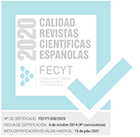Plants used in folk cosmetics and hygiene in the Arribes del Duero Natural Park (western Spain).
Keywords:
plant resources, hygiene and cosmetics, traditional knowledge, Spain.
Abstract
In the present work we assess and document the ethnobotanical knowledge about cosmetic plants and plant species useful for personal and domestic hygiene in the Arribes del Duero Natural Park (provinces of Salamanca and Zamora, Spain). Field work was conducted between 2005 and 2009 by means semi-structured interviews and participant observation as well as transect walks in wild herbal plant collection areas, with 80 informants (mean age 72) in 18 localities. The informants, in particular the elderly women, are familiar with 32 useful plants distributed in 18 botanical families and know how to use them in a variety of ways. The most frequently used plants were Thymus mastichina (L.) L. and Quercus ilex subsp. ballota (Desf.) Samp. Different plant parts are used, but the branches are exploited more frequently. The uses documented are of great ecological value since the products obtained are less harmful to our health and the environment.Downloads
Download data is not yet available.
Article download
Published
2012-10-22
How to Cite
González J. A., García-Barriuso M., Ramírez-Rodríguez R., Bernardos S. y Amich F. (2012). Plants used in folk cosmetics and hygiene in the Arribes del Duero Natural Park (western Spain). Lazaroa, 33, 9-18. https://doi.org/10.5209/rev_LAZA.2012.v33.40276
Issue
Section
Articles
License
Lazaroa is an open access journal to promote global exchange knowledge. It facilitates unrestricted access to its contents from the moment of publication in its electronic edition. The originals published are property of the Universidad Complutense and it is mandatory to cite such source in case of total or partial reproduction. All contents are distributed under a Creative Commons License 4.0 (CC BY 4.0). This circumstance must be expressly stated in this way when necessary. You can check the informative version and legal text of the license.
Lazaroa does not charge for download or publishing any article.








